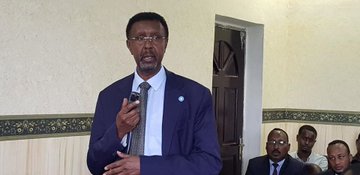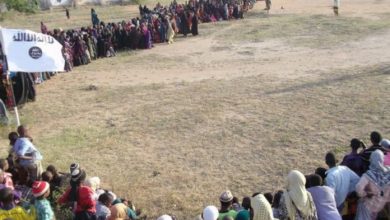Kenya’s camp clear-out brings tough choices
The decision to close Kenya's largest refugee camp - home to almost a quarter of a million people - is raising difficult questions, says Mollie Gerver.
The decision to close Kenya’s largest refugee camp – home to almost a quarter of a million people – is raising difficult questions, says Mollie Gerver.
Dadaab refugee camp, in eastern Kenya, was established almost 30 years ago. It currently hosts around half of the country’s refugees – 230,000 of almost 500,000, the majority Somalis who fled the civil war in their homeland in the 1990s, or came during the famine in 2011.
Others have found themselves here having left South Sudan, the Democratic Republic of Congo and Burundi.
The Kenyan government recently ordered the UN Refugee Agency (UNHCR) to close the camp. It has not stated its reasons for this, but in the past has ordered similar closures on security grounds, claiming Dadaab could host terrorists from the Somali militant group Al-Shabaab.
On announcing the closure of the camp, the government said that the refugees would be relocated. For most, this means being moved to other camps, but for some this means repatriation: being sent back to their countries of origin. The government made a similar announcement in 2015 which led to over 80,000 refugees repatriating in three years. But violence and hunger led to 30,000 fleeing back to Kenya.
The 2015 repatriation plan was later declared unconstitutional by the Kenyan High Court on the grounds that the targeting of Somali refugees is an act of group persecution, illegal and discriminatory. But the government hopes to implement the new plan regardless.
Those being repatriated rely on the UNHCR which, using money from wealthy donor states, facilitates their transport. The UNHCR says that it only helps with voluntary returns. It also claims that repatriation is desirable when conditions in home countries have significantly improved, or returning is much safer than staying in the country of asylum.
But some human rights organisations have criticised the UNHCR for not giving refugees enough information and not living up to its commitments to ensure a truly voluntary return. Because the Kenyan government is ultimately responsible for whether Dadaab closes or not, the UNHCR’s options are limited to: Helping with repatriation regardless of whether refugees’ choices are voluntary; only repatriating those who seem to be returning voluntarily; or refusing to help with repatriation at all. But if the UNHCR were to pursue this last option, then all refugees would be denied access to repatriation.
None of these policies are ideal. The question is which is best. To determine what the UNHCR ought to do ethically, we need to consider whether refugees are truly voluntarily leaving, and what impact UNCHR repatriation has on government policy.
The UNHCR acknowledges that repatriation is often unsafe, but claims to be holding interviews with refugees considering return and repatriating only those whose choices seem voluntary. If choices are voluntary, perhaps the UNHCR’s repatriation assistance is ethical.
But if refugees are being forced out of Dadaab, their repatriation isn’t voluntary. Being forced out doesn’t necessarily mean being physically forced out of the country. It could mean that conditions are so challenging in the camp – and in Kenya in general – that choices to return are still involuntary.





